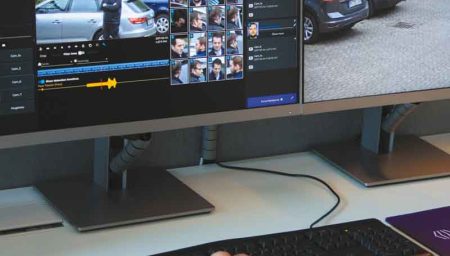Empowering smarter investigations through advanced video analytics

Faced with ever-growing volumes of video and image data, law enforcement agencies need smarter tools to identify both biometric and non-biometric key evidence quickly and accurately. IDEMIA Public Security’s Augmented Vision solution was developed to meet this challenge head-on, helping investigators extract meaningful insights from digital footage in a fraction of the time.
 We spoke with Thomas Mauger, Product Manager for Video and Face Recognition Solutions at IDEMIA Public Security, who leads the development and deployment of Augmented Vision, to understand how the technology works, how it is evolving, and what it means for the future of criminal investigations.
We spoke with Thomas Mauger, Product Manager for Video and Face Recognition Solutions at IDEMIA Public Security, who leads the development and deployment of Augmented Vision, to understand how the technology works, how it is evolving, and what it means for the future of criminal investigations.
At its core, Augmented Vision is designed to help law enforcement agencies rapidly analyze large volumes of video and image files, whether it is CCTV footage, drone recordings, content from smart devices, or even social media. Investigators can extract key elements like faces, vehicles, license plates, and people of interest to focus only on the most relevant parts of the footage. The solution’s strength lies in its state-of-the-art facial recognition, reinforced by advanced analytics that cut through hours of irrelevant content to save time and accelerate investigations.
It was originally developed to process CCTV footage post-event, which made sense because that is where most of the video evidence came from at the time. But that has changed. Our solution can now handle many different video sources, from drone and bodycam footage to smartphone videos, computer hard drives, and more. If a suspect’s smart device is unlocked, Augmented Vision can analyze videos and images stored on it, extract thousands of faces, and cross-reference them with criminal databases or watchlists—all within minutes.
Imagine a suspect is arrested in connection with a serious crime. When it comes to video and biometric analysis, investigators typically aim to extract usable evidence within 24 to 72 hours. Establishing a legally viable link between an individual and an event quickly is essential for timely and effective investigations. With access to smart device data such as photos and videos, Augmented Vision can process it all rapidly, organizing and filtering the data to surface potential clues or matches. It is fast, automated, exhaustive, and does not get tired, which makes it incredibly valuable in those high-pressure timeframes.
One of our European clients used Augmented Vision to process 3,000 hours of video, in just ten hours of investigation. They tracked all appearances of the suspect and were able to prove the crime was premeditated. Without this technology, it would have taken weeks and a significant number of officers. In other cases, it has helped agencies around the world revisit and solve cold cases—cases that might otherwise have remained unsolved.
Its versatility and scale. It is not tied to a single data source, it can handle almost anything investigators throw at it. It works quickly, without pause, and is always improving thanks to continuous feedback and development. It is powered by IDEMIA Public Security’s top-ranked 1:N facial recognition technology, consistently recognized by NIST as top ranking algorithm manufacturer. This foundation, combined with advanced analytics, ensures unmatched reliability for investigators. Above all, it is designed with real-world law enforcement needs in mind: speed, accuracy, and clarity in the face of overwhelming data.
Several promising R&D directions are under exploration. Two key areas include integrating AI-driven voice analysis to extract and search speech from video, while also enhancing automatic triage using advanced algorithms to prioritize the most relevant content. Both aim to make investigations faster, more precise, and more intuitive.
What matters most to us is building something that truly helps those on the front line. We listen carefully to the needs of investigators and adapt the solution to meet real operational challenges. Technology will continue to evolve, but our goal remains the same: to give law enforcement the tools they need to work faster, smarter, and more effectively. That is what drives us every day.
Latest News
Related Content